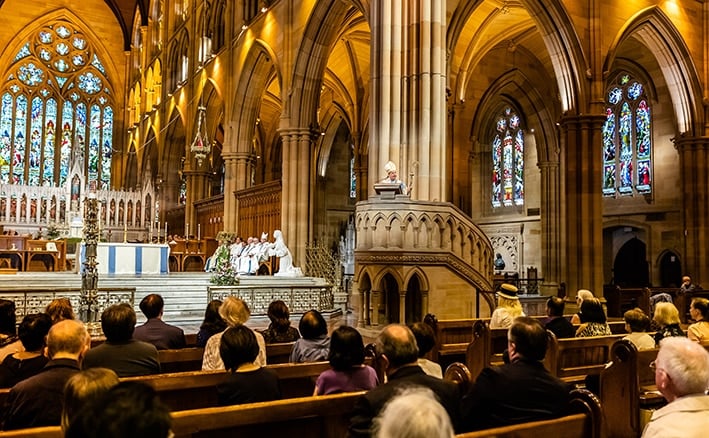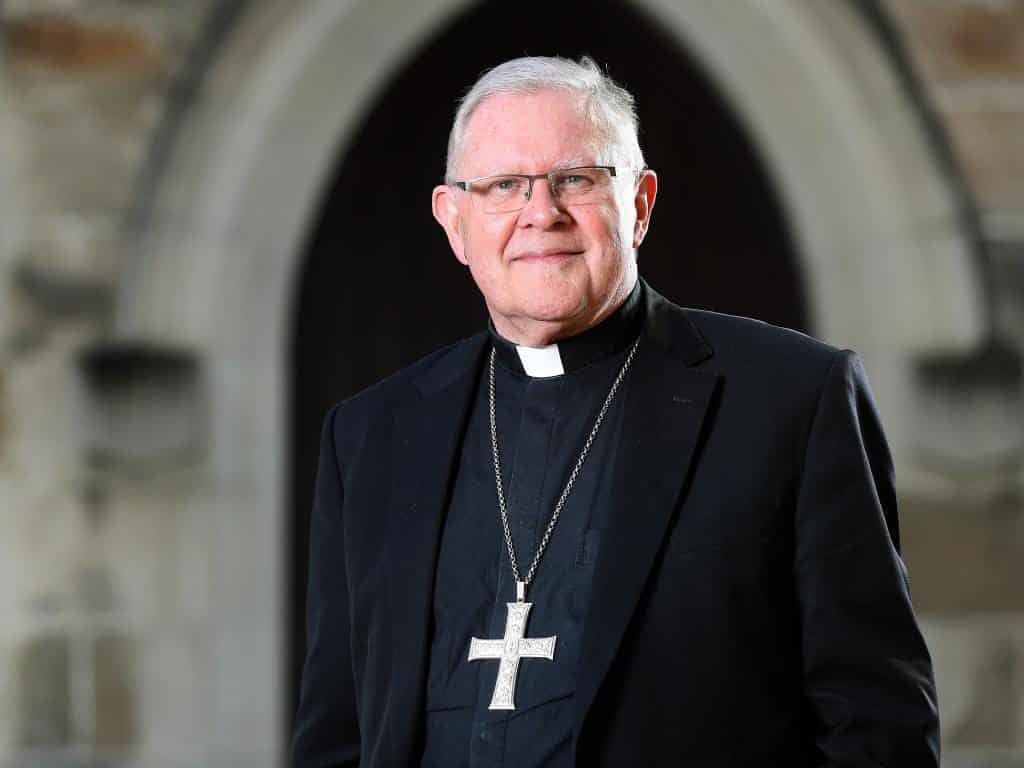
The Royal Commission made some sensible recommendations for changes in church governance. But they also made recommendations – like breaking the seal of the confessional – which the Church can’t introduce without altering its nature and mission.
I think something similar has happened with The Light from the Southern Cross (the Governance Report). I can see why Church leadership didn’t want this report released yet.
The Report itself tells us why.
The Governance Report
When it was commissioned, the Australian Catholic Bishops Conference asked that the governance review take place “in the light of Catholic ecclesiology.” (p 4) The Report seems to have a generous understanding of what that means: for example, they don’t dare openly recommend ordained women deacons, but they leave the door wide open for it (pp 129-30).

This doesn’t stop them mildly threatening the bishops in return: “The next generation of episcopal leaders must be prepared to embrace the approaches advocated in this report … It follows that all of these matters should form part of, and be given high priority in, the investigations and consultative processes leading to appointment of new bishops.” (p 61)

Proponents of ‘synodality’ usually talk a lot about ‘consensus’, which in their terms seems to mean ‘We keep talking until we wear you down’.
I went to an interesting lecture recently by Professor Myriam Wijlens, a canon lawyer who is a member of the Pontifical Commission for the Protection of Minors, who described this process in action.
With a Report like this, sifting the good recommendations from the impossible takes time, and is likely to end in tears. This is the real danger: that this process will wear our church leaders down, and end in them agreeing to dodgy proposals simply to get this mess off their plates.
The Governance Report is good in parts. There are some reasonable proposals for greater transparency in some areas – like publishing diocesan and parish financial reports and being more open about how bishops are selected and appointed.
The Governance Report is good in parts …
But these are mixed in with requests which verge on the delusional, and which indicate a troubling mindset. One of the places you can see this most clearly is in the footnotes and references – a strange mix of authentic Church teaching and fringe opinions from authors who don’t represent the Church at all.
Another troubling aspect is a Boomerish excitement about Vatican II and now Pope Francis, who is cast as the true heir to the Council. Pope Francis gets 94 mentions in this document. Pope Benedict XVI gets 11 mentions. And that colossus of the modern Church – the man responsible for saving Vatican II’s implementation from the lunatic fringe – rates just five mentions (six if you count the time they remember to call him ‘St John Paul’).
Another troubling aspect is a Boomerish excitement about Vatican II and now Pope Francis, who is cast as the true heir to the Council
There’s some sleight-of-hand about ‘synodality’. This term still doesn’t have an official definition, but that doesn’t hold back the Governance Report authors. They’ve already decided what it means: “Synodality involves the active participation of all members of the Church in its processes of discernment, consultation and co-operation at every level of decision-making and mission.” (pp 29, 43). This self-created definition is then exercised like a racehorse to support anything and everything else they propose.
The determination to take this process and run up the garden path can be found throughout the Report. When you get to pages 67 and 68 it really blossoms. The authors of this document state that they believe Australia’s Plenary Council is going to be so important that it will give advice to the Holy See “on matters that transcend the interests of the People of God in Australia and that may be of benefıt to the global presence of the Church.”
The authors of this document state that they believe Australia’s Plenary Council is going to be so important that it will give advice to the Holy See
A global exemplar?
Apparently our Plenary Council “offers a more concrete synodal pathway to planning for the future Catholic Church, at least in this country and, hopefully, as one exemplar that others can consider.” They’ve also hinted at this in the notes on the title of the documents:
“This report outlines, for Australia, a way to discern a synodal path: a new praxis (practice) of church governance. But the light which guides the process of discernment is not anchored in this corner of the world. It can radiate out so as to reveal models of synodality that the global Catholic Church can embrace” (preface).
This is a level of delusion I haven’t previously encountered in my many, many years of reading misguided Australian Catholic reports. But it gives an unparalleled insight into the public posturing that’s accompanied the Plenary Council. Certain people have been taking it and themselves very seriously because they genuinely believe this will have a global impact.
This is a level of delusion I haven’t previously encountered in my many, many years of reading misguided Australian Catholic reports
The authors also connect the Plenary Council with the Amazonian synod and the German bishops’ synod (p 68) – even though a Plenary Council is nothing like a synod. There is no mention of how Pope Francis failed to deliver the anticipated women deacons after the Amazon synod. There is also no hint that he’s likely to disappoint some people again over the German bishops if they decide to go into open schism with Rome.
Then there are the thousand tiny annoyances: ‘eucharist’ but never ‘Eucharist’; ‘Spirit’ and ‘Holy Spirit’ used interchangeably but appearing to have different functions; the false idea that Pope Francis is the only Pope who has done anything about child abuse in the Church; the dubious secondary sources; a dangerous potential conflation of ‘rites’ with ‘churches’ (p 34) that looks like it’s trying to set the stage for a more autonomous local church.
There are also misapplications of Scripture – for example, clericalism is “a behaviour that fails to reflect the equality of all disciples of Christ, an equality that the New Testament underscores.” Which the New Testament doesn’t always: Peter is mentioned 191 times; John only 48. Maybe read St Paul’s letters to Timothy as well.
A curate’s egg
My summary? The Governance Report in its current form has good points, but there are too many signs that it will try to engineer doctrinal change through governance change, which I would like to unpack further. It’s also hopelessly out of touch with the most vibrant parts of the Church in Australia: the places where young people, especially women, are thriving – but again, that’s another story.
It’s also hopelessly out of touch with the most vibrant parts of the Church in Australia: the places where young people, especially women, are thriving – but again, that’s another story.
This is another tragic missed opportunity, but there may be elements of real reform that can be saved with time and patience. However, there is a thick morass of unhelpful information and recommendations that have to be waded through first.
Related
Leaked report needs due consideration, say Australia’s bishops
